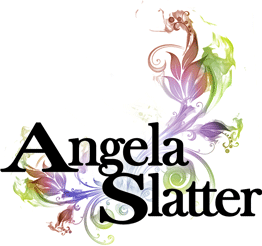
Art by Kathleen Jennings
This is another redux article ( I wrote the original version for The Australian Writer’s Marketplace back in the mists of time).
Competitions, Crafting Through Critiquing, and the Short Story
I’m often asked how to win short story writing competitions: weird, right? If I knew that, I’d have won one by now. Competitions are uncertain ventures at the best of times, but if you haven’t put the effort into crafting your story, then the chances of your work getting past the first hurdle are slim. Incorrect spelling, grammatical infelicities, plot holes, logic abysses, repetition of word, phrase or action, unconvincing descriptions and stereotypical characters are all the hallmarks of unpolished writing. They are also the hallmarks of the first or second draft, where you’re still figuring out the story for yourself. But by the third or fourth draft, the issues listed above should no longer be in evidence.
So, how do you improve? Well, with a lot of practice, some handy hints, and a critique group. Writing is absolutely a solitary pursuit – but critiquing (which can be the foundation stone of a good edit) needs more than one head. Misery loves company!
In this article I’m going to highlight the problems I see most frequently in short stories, offer some tips for the lonely nights of editing, and talk about what a good critique group should do.
In general
The short story is precisely that: short. It’s been called a ‘widened moment’ and that’s what the writer is examining, a moment, a slice of life. Back story is not given in great chunks of info-dump, but rather hinted at through dialogue and implication – the form requires a deft hand.
For me short stories are very much about identifying the most essential elements I want to show: what are the critical things I need to reveal about my characters, my setting, my dialogue, my plot? The short story doesn’t have the luxury of a long roll-out or a huge cast of characters – every component must be distilled to its absolute essence. Everything in a short story needs to work hard (but seem to be effortless), so you must be quite ruthless about what is left in and out. The magic is all smoke and mirrors, all sleight of hand.
One of the first things you do on your first read through of a finished first draft is establish if you have given the reader a lot of information about a character’s past, present or future that’s irrelevant to the story at hand. Similarly, are your descriptions lush and detailed, but not really needed for the tale you’re trying to tell? Have you given great swathes of background about an incident that has no bearing on this tale? The first draft is when the writer tells themself the story and works out foundation details, which are not actually things the reader needs to know –
if a piece of information is not critical, then remove it – otherwise you’re wasting words.
Spelling, grammar and punctuation
These three things are fundamental to communication – to getting your message across. Neither spelling nor grammar nor punctuation are simply suggestions you may or may not choose to follow. There is a world of difference between ‘there’, ‘their’ or ‘they’re’ – and if you as a writer don’t know what the difference is, then how is a reader supposed to divine your meaning? Punctuation denotes the rhythm of your prose, gives a reader the beats, shows them when to pause, indicates the passage of time. Correct usage is not negotiable.
Your greatest friends are the dictionary, the thesaurus and a grammar book such as The Little Green Grammar Book (Mark Tredinnick), Eats, Shoots & Leaves (Lynne Truss) for punctuation, and the good old staple Strunk and White’s The Elements of Style.
Characters
When re-reading your draft, think carefully about whether your characters are believable and well-rounded or cardboard cut-outs. A stereotype is a ‘personality shorthand’, and works very well in advertising and anecdotes, but in a short story you want a character to have depth, a layered personality. With that comes reader engagement and understanding; if a character is nuanced and believable, a reader will keep reading. Stereotypes are lazy writing – make your characters richer by reflecting the human condition through them. Show what your protagonists want, need, fear and you will hook your readers because they can relate to the struggle of another.
When it comes to setting descriptions, you needn’t list every item in a room, nor every tree in a field. You need only ensure that your story is not occurring a ‘white room’: what would the character see upon entering the room? What details will tell the reader the where and the when of the story? For example, is there a velvet fainting couch or a rocking chair or a metal barstool? A four-poster bed or bunks? Items that are going to be important to the story show be shown early on, so they are already ghosting – foreshadowed – in the reader’s mind. Surprise appearances of anything that solves all story problems at the end of a tale will strain credibility, and using deus ex machina phenomena to explain otherwise unsolvable plot problems will not win you any prizes.
Repetitions – considered and ill-considered
You should always be aware (and beware) of repetitions. Sometimes a particular word or phrase will pop up over and over, which means your writing is going to lack the layers that a healthy variety of language brings. A broad vocabulary adds texture.
Repetition used in a considered, intentional fashion to create a rhythm or emphasis, when done properly, works beautifully. It’s a device that generally functions best when the repetitions of the feature word are placed in close proximity – too loose a scattering tends to lose connection and therefore the intended rhythm. Another thing to check carefully is whether your characters are constantly bursting into tears, sighing, sitting in silence, scratching their heads, wringing their hands, clenching their fists, or holding things aloft. Your protagonist needs to have a range of actions and reactions. Unintended repetitions are wasted words.
Dialogue
Dialogue needs to sound like human speech, but it isn’t actually the same. When we talk, our conversations diverge and meander, filled with irrelevancies that don’t necessarily add anything to our store of knowledge or the conduct of our existence. There are a million words wasted in the every day, but written dialogue is another beast all together. It has to be or you risk boring (and losing) your reader.
Its purpose is to move the story, to give subtle insights into characters, set a mood, and to pass on required plot information. Dialogue must progress things subtly, obliquely, rather than in info-dump fashion where everything is revealed all at once.
Do you really need that last sentence?
Something I see a lot is the Unnecessary Last Sentence. If you’ve written a glowing paragraph describing a lovely location – showing the reader a paradise – then don’t write final telling sentences such as ‘It was beautiful’ (or even worse, ‘It was indescribable’). Do not tell the reader about something you’ve already shown.
The critique group
Apart from applying the above to your own work, you also need to apply it to the work of others – the members of your critique group. The hardest thing in the world is to assess your own writing. This is where a critique group can help with picking out repetitions, spelling mistakes, and finding plot holes you may have missed.
The point of the critique is to make your story the best it can be in and of itself. The group should be a forum where you learn to improve. A group with more than ten members is too large – too many voices, too many opinions. There should be folk with varying levels of experience – so the newer writers can be mentored. There should be regular meetings, and rules for conduct – such as a two minute time limit in which to deliver a critique, a solid silence rule for the person receiving the critique until the all critiques are done, respectful behaviour, and always remembering that the process is about the story, not the writer.
Where do you find a critique group/buddy? This can be tricky. Try writing groups via local libraries and writers’ centres. Doing short writing courses can help put you in contact with like-minded folk as well as teaching you how to critique properly. Don’t get me wrong: you won’t like everyone in your class and you won’t agree with them. However, there’s a good chance you’ll find one, two or three people you get along with and whose writing you like – people whose opinions you respect. That can become the core of your own critique group.
And in conclusion …
Finally, enter competitions by all means, but be reasonable. I cannot tell you the number of times I’ve heard people say ‘I can’t believe I didn’t win.’ Really?? Competitions are beyond your control: you don’t know who the judges are, you don’t know who the other entrants are, and you cannot know the standard of other entries. Judges’ opinions are entirely subjective, influenced by their own likes, dislikes and prejudices – all things over which you have no sway.
Enter with hope, but not expectation and remember that the only thing you can control is the quality of your own work.
To note: the above is aimed at the short story. If you’d like to learn how to apply similar ideas to your novel, there’s a nifty self-paced course I wrote for The Australian Writers’ Centre with the fabulous Pamela Freeman. It’s called Cut, Shape, Polish and there’s more info here.


2 Responses to Competitions, Crafting Through Critiquing, and the Short Story: Some Notes